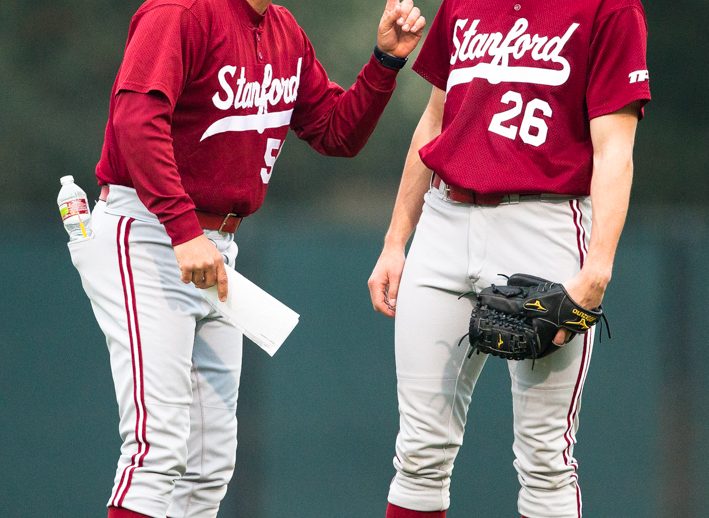Stanford Baseball: Recruiting, History, Schedule, Coaches & More
As another semester comes closer to an end, many high school students look to Stanford with the hopes of being accepted to this elite university. But with only an average of 7000 students being enrolled during the autumn period, it’s easy to imagine that finding your space is difficult. But this race becomes even more challenging for players who want to join the Cardinals Baseball Roster.
With this team’s focus on excellence on and off the field, you may be wondering what you can do to give yourself a better shot at recruitment. This guide will tell you everything you need to know to find success in applying for this university.
If you haven’t already applied to this university, then you might be wondering one common question.
Why would I want to apply to Stanford?
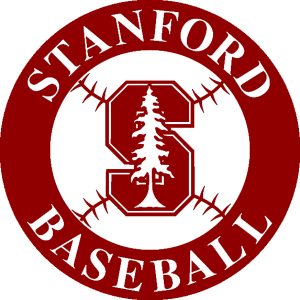
Founded in 1885 by Leland and Jane Stanford in memory of their child, Leland Stanford Jr, the university, located in Stanford California near Silicone Valley, was intended to be a coeducational and non-denominational institution. The first students were admitted to the school in October of 1891 and has found early success that was temporarily halted during the San Francisco EArthquake of 1906.
The university showed an amazing tenacity, overcoming disaster and financial struggle thanks to the efforts of staff greats such as Provost Frederick Terman who supported local industry into what later would develop into Silicone Valley. Since then, the university has come to be known for academic strength, wealth, and it’s proximity to Silicone Valley making it a prestigious university. It also found ranking as one of the world’s top universities.
Since this is a baseball site, you may have the following question.
What about the Stanford baseball program?
The baseball program of Stanford was established in 1892, one year after the first students were admitted to the university. So it stands to reason that Stanford holds baseball in a place of honor even among it’s many already prestigious programs. This program competes in the Pac-12 NCAA Division I race, and has several national and conference championships under it’s belt during it’s long existence.
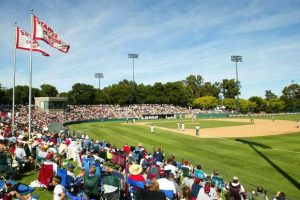
The roster also produced several Major League players, with some who have gone on from their baseball roots to join the NFL, such as John Elway who played for the cardinals for two seasons. This tells us that the program produces strong players who, if they choose, can and often do make a mark in professional capacity.
What does this mean?
Stanford offers students a wonderful opportunity to develop with both the university’s strong training and athletics roots as well as it’s emphasis on student academic growth. Many students who graduate from this university, especially those who participate in the Baseball program, are bound for great things.
How does Stanford Recruits their players
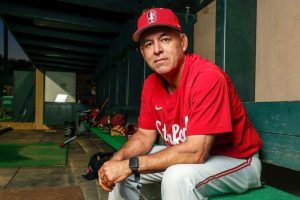
Like many recruiting universities. Stanford goes through an annual year long selection process to help them find the new talent to replace graduating seniors. Stanford has some peculiarities that are unique to their university, but there are some common ground elements that you need to know about.
Let’s take a look at some of these methods.
General Recruiting Tools
Every coach makes use of general recruiting sites to help them search name-by-name in the hunt for the talent that will fit their rosters. These sites are an easy way for coaches to collect information and are designed to make recruiting easier.
These tools are similar to the ones that students use to find athletic scholarships and they work with the same principle. By uploading information about a player or school, users will be able to best match players to universities who will best benefit one another.

Our advice, ask recruiting coaches and your high school coaches what recruiting tools they know about and frequently use and ask the site admins or contact us page about how you can help keep your information up to date. In Stanford’s case, you’ll definitely want to call and ask the coaches what tools they use.
University Camps and Showcases
Every university hosts training camps and showcases that are open for enrollment to the public. These camps and showcases are designed to give student-athletes the chance to train, compete, and show their skills.
It’s no surprise that many university coaches, like those from Stanford, pay close attention to the results of these camps. Certain student-athletes will always stand out and thanks to hands-on observations and experience, coaches will know that the student is the real deal rather than snippets carefully chosen for highlight reels.
We’ll go into University camps and showcases more later, but for now, consider this to be one of your first and best options to get noticed.
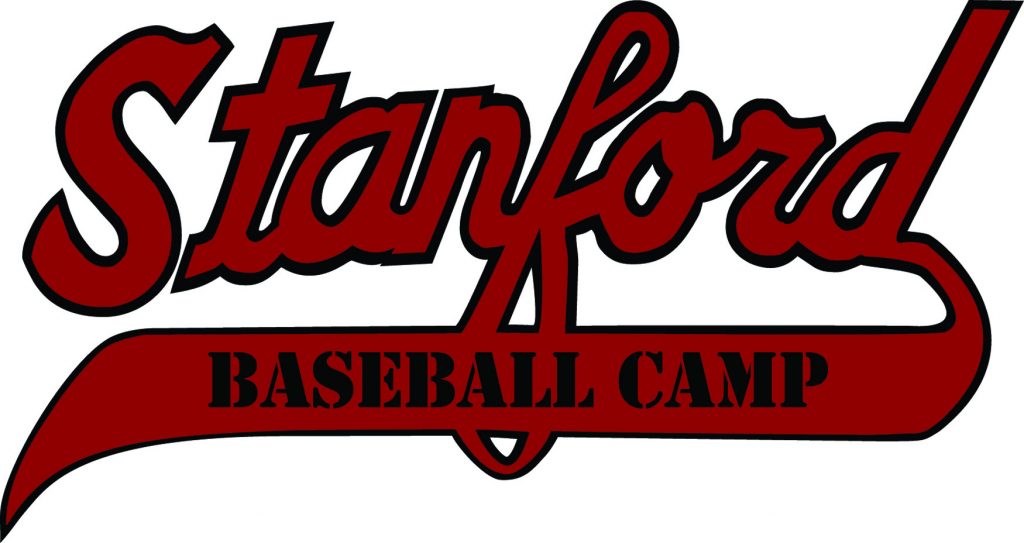
An important tip
Before you show up at a university camp or showcase, reach out to recruiting coaches well beforehand and let them know you’ll be attending. This will give you a higher chance of Stanford’s coaching staff looking out for you specifically.
Talent Scouting/Identifying Services
Coaching takes a lot of work and recruiting eats time into an already busy schedule. That’s why many coaches use talent identifying services to send them notices on promising recruits that meet their roster’s needs.
Sites such as National Preps may not be for students, but they can be a powerful tool to getting your name in a coach’s inbox.
Our next tip actually goes into how you can best take advantage of this.
Recommendations from High School and Club Coaches

Stanford’s coaching staff relies on the recommendations of high school and club coaches to help them make recruiting decisions. High school and club coaches want to see their best athletes succeed and will make a good faith effort to be upfront about your statistics to recruiting university coaches.
This matters, because even the highest level player won’t get very far if a high-school coach doesn’t announce and verify their skill level and physical attributes to a university coach.
Student-athletes can take advantage of this by getting on their coaches good side. Building a rapport will lead to more frequent assistance since, professionalism aside, everyone works harder for those they are on good terms with.
Similarly, if you are on great terms with your coach, you can direct them to talent scouting sites and organizations and their referrals will help scouts deliver your name to university coaches.
But it’s not just scouting and referral websites that get in on the action. Thanks to the Internet, you have a powerful tool at your disposal.
Social Media

Everyday, more and more companies look at a prospective employees social media page to get the scoop on who they are when they aren’t at the office. So it stands to reason that recruiting coaches will look up prospective students online as well.
Not only will recruiting coaches check out student-athletes of interest to see whether they would be a strong fit for their universities, but they’ll also look for posts about you from rival schools and competitors.
To take advantage of this, we recommend that you put your best face forward on your social media page and carefully curate what goes to your feed. Another strategy that is riskier, but may pay out well in the end, is being open to what universities contact you.
Some schools pay attention when they notice that their rivals have taken an interest in an athlete and may work harder to get your commitment first.
We always urge caution when attempting this strategy, since showing too much interest in a school that contacts you or misrepresenting the facts, may get your applications tossed away.
Direct Communication
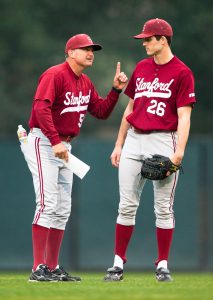
For many coaches though, nothing beats the personal rapport that can develop by direct or face-to-face communication. This means emails, phone calls, and letters and the exchanges that these personal communications can help develop.
Ideally, this will make it so that coaches no longer need outside sources to remember your name. But it also helps you determine if a coach is the right fit for you. As long as you keep aware of NCAA mandated periods where coaches may not speak with you, this is a great choice.
If you’re asking yourself whether you are the kind of player Stanford needs, then let’s see if you meet the cut.
What types of players does Stanford look for?
You might be thinking that all you need to get onto a recruiting list are great grades and great game statistics. While those certainly help, as we’ll discuss below, Stanford expects quite a lot more from their potential recruits. The following is a short list of what you must have to appear high on the university’s list of potential recruits.

Humility
There’s a lot that you have to do to get noticed by Stanford’s coaching staff and win an athletic scholarship. So many players may be tempted to see themselves as being the best of the best for earning the privilege. But you have to remember that your fellow teammates were also the best of the best in their hometowns and worked just as hard, at least, to earn their slots.
Not to mention that the upperclassmen have the same advantages of a stellar high school career as well as years of work with the collegiate squad. So from the very start of your time with the Cardinals, you are one elite among many.
This doesn’t mean that you shouldn’t accept your own talent, but you have to accept that you need the team as much as it needs you. Not to mention that keeping a humble attitude makes you easier to deal with in the locker room, allowing your team to focus on beating the opponents on the field, rather than showing up a headstrong teammate.
Students that can take this lesson to heart tends to be a more valued and welcome member of the team in the locker room and are more desired by recruiting coaches.
Responsible Players
Unless you are lucky enough to live close to Stanford, you’ll be most likely moving out of your town, out of your state, and possibly even out of the country in order to play for this team. So you don’t have adults looking over your shoulder making sure you manage your time and make healthy decisions.
There are a lot of temptations to deal with when you live on your own and coaches want to trust that their recruits will be able to overcome these temptations to keep up with their on and off field responsibilities.
If you need an idea of what to expect, see if you can talk to current or past players who can share their experiences.
Great attitudes
Speaking of what current players may say, they’ll likely tell you that coaches work hard to foster a family feel in their teammates. They want players who can help each other out both on and off the field and help create a positive environment that more toxic players and attitudes would simply not allow.
For that reason, coaches prefer positive players to join their squads. This doesn’t mean that you have to be bubbly if you aren’t naturally so. Instead you should be ready to play and you should be supportive of your fellow teammates.
This mix between encouraging and serious also helps in another facet that coaches look for.

Serious Students
On the same token, even if you have dreams of graduating and jumping right into a professional baseball career, Stanford’s recruits are students first before being athletes. It’s vital that you remember that and act accordingly.
Keeping up your grades will keep you with your scholarship and will keep you in a place of honor on your team. It also shows the kind of drive and determination to succeed that is very attractive to coaches from all universities, including Stanford.
If you have trouble with maintaining strong work habits, we recommend finding a counselor who can help you find a training or time-management program that works for you.
Superstar Players
Finally, coaches are looking for players who excel at their positions and are ready to push beyond their own limits. As we said earlier, even the top local stars at the high school level have a world of improvement to make once they reach the collegiate NCAA level of competition.
Coaches therefore are looking for accomplished players who display talent and a willingness to learn. Because even the most naturally gifted athletes will struggle to keep up with players who show superstar dedication to training and fitness.
Let’s take a look at what you can expect when you play for Stanford.
The Coaching Staff at Stanford
The unsung heroes of many athletics programs are the coaching staff that provides leadership, guidance, and a sense of brotherhood among it’s players. So every success that Stanford’s baseball program can claim has several strong links back to the coaching staff that led them at the time. So we should take a moment to recognize these great heroes of this program starting with the head coach.
David Esquer

David Esquer became the 21st head coach in the program history on June 16, 2017 after he succeeded Mark Marquess who retired after 41 years of service. Previously, Esquer played under Marquess on the 1987 national championship team making this an excellent student-mentor hand-off. Previously, Esquer had served for 18 years as the head coach at Cal, where he was the 2011 National Coach of the Year.
The upcoming 2019 season will be Esquer’s second in charge on The Farm after an incredible 46-12 season record in 2018, which helps add to his current record of 571-479-2. He has also proven his worth as head coach by guiding Stanford to its first Pac-12 Conference title since 2004 in his first season at the helm.
This and many other accomplishments should explain why players are excited to be working with this coach.
Thomas Eager

In 2018, Thomas entered his first season as the Cardinals pitching coach. Before that, he also mentored the pitchers for Esquer at Cal for two seasons, including first round selection draft picks, such as Dalton Jeffries. His skill at training pitchers has earned him further accolades, such as posting the lowest ERA in the Mustang’s history.
Tommy Nicholson
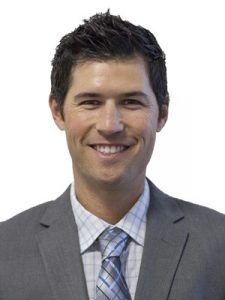
Tommy Nicholson entered his first year as assistant coach with Stanford in the 2017-2018 year. He primarily assists the team as it’s infield and hitting coach. Before joining as assistant coach, he served as an assistant at Sacramento State helping the hornets to the Stanford Regional. Under his guidance, the Hornets finished with a school record of .979 fielding percentage with only 47 errors in 59 games.
Now that we met the coaches, you might be wondering what it’s like to play for such a high performing team.
What is it like playing for the Stanford’s Baseball Team?
Many athletics programs across the country are designed to train and drill players into becoming the best. They’ll be taught to maximize their strengths, overcome their flaws, and work at becoming some of the star players in their positions across the board. This isn’t different for Stanford, but the university does something special.

Mark Marquess recognized that many of the great athletes in university baseball programs that earn selection in MLB draft picks may never get to play a game. He recognized that with players being unable to sign on as a free agent after draft selection, they could not negotiate their contracts until after six years, which is often after the prime of their careers. He felt that it was a sin that players work at the university level for years but never complete their degree programs because of the money offered by major league teams.
That’s why, thanks to Marquess’ work, baseball student-athletes are given extra courses so that they were far enough ahead that they only needed one or two quarters of instruction to earn their diplomas if they came back to finish their education, rather than the two or three years more common across the country.
This means that while athletics will always be an important part of your career on the Cardinals, there’s a strong emphasis on education and preparing for the future that can’t be matched anywhere else.
Does Stanford have any notable rivalries?
Stanford has four main rivalries that have persisted for years. The main rivalry that Stanford faces is versus the California Golden Bears. These two teams compete annually and fans are always eager to see who’ll come out on top. At the time of writing, Stanford leads this rivalry with a 62-46-11 record.
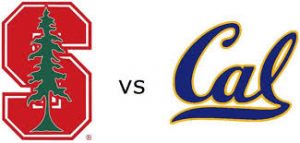
Stanford also maintains an active rivalry against USC, which stems from such upsets as Stanford defeating USC in 2007 in what was called one of the greatest upsets in NCAA history. This was due to Stanford being an underdog with a 41 point deficit managing to eke out a win against the then #1 ranked USC team.
Stanford also competes heavily against San Jose State, largely due to being separated from the university by a distance of only 23 miles. Stanford is currently winning the series with a 52-14-1 record.
This program’s lightest recognized rivalry by many fans and sports pundits is the one between Stanford and Notre Dame. While fans of Stanford have no love for the Fighting Irish, there’s more respect between the two schools than any of the above rivals. But what’s interesting is that this rivalry happens even off-season, as the university’s often compete directly for the same talent to add to their rosters.
If this has gotten you excited to join Stanford, then you likely have one important question.
How can I get an invitation to play for Stanford?
Like most universities, there are several must have requirements that must be met in order to receive a scholarship to play for this prestigious team. While every university has their own slight variations on these themes, they cover three main areas that we’ll go over below.
Stanford Academic Requirements
The reason we list Academic Requirements first is that, by NCAA standards, scholarship winning students must be Student-Athletes. This means that their primary purpose in coming to this university is to complete their studies and perform excellently in the classroom.
The NCAA proves their dedication to this goal by requiring all Division I schools to meet the following academic minimum requirements to get their foot in the door.
- Complete 16 core courses to include…
- Four years of English
- Three years of math (Algebra 1 or higher)
- Two years of natural/physical science (including one year of lab science if your high school offers it)
- One additional year of English, math or natural/physical science
- Two years of social science
- Four additional years of English, math, natural/physical science, social science, foreign language, comparative religion or philosophy
- Complete 10 core courses, including seven in English, math or natural/physical science, before your seventh semester.
- Earn at least a 2.3 GPA in your core courses.
- Earn an SAT combined score or ACT sum score matching your core-course GPA on the Division I sliding scale, which balances your test score and core-course GPA.
Even if you have met these requirements, you have to remember that there is a competition for a limited number of spots on the team each year. So if you want a higher chance at successful recruiting, you have to surpass these standards. You can never go too high.
As we mentioned above, the university has followed Marquess’ standards and expect their baseball student-athletes to get ahead of the curve in their education. So you can expect that students that demonstrate an active interest in education or higher grade/testing marks will be more favored.
Physical Requirements
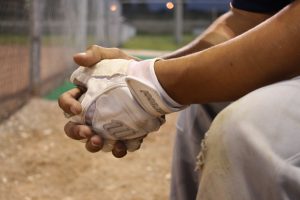
Every position has particular requirements to excel in those roles, but what it all boils down to is staying match-fit and keeping up with your skills training. Once you enter the NStanford roster, you’ll be able to work with your coaches to find a training routine that works for you and your role.
But what you might want to do now is talk with your coaches about your strengths and weaknesses as a player and ask about exercises and training programs you can use to improve. You should also get accurate measurements of your player ability and physical attributes (height, weight, etc) and ask your coaches if you’re playing for the right position for you.
Personality and Management Skills
When you enter university level athletics, coaches are going to require a lot more of your soft social skills than you ever thought possible. You’ll be expected to not only show a willingness to learn, but you’ll also have to become a positive and supportive member of your team.
You’ll also need to be able to master managing your time, because at the university level you won’t always have someone hanging over your shoulder reminding you of what you have to do.
Specifically, you’ll want to show some of, if not all, of the following skills.
Teamwork
As a member of The Cardinals, you will be expected to work with your team to pull everyone through even the roughest spots. There is no room for prima donnas when the team is entering the final few innings behind on points or barely ahead of their opponents. So the coaches want to see that you can work with your teammates, helping them stand when they fall.
Determination
Athletic competition is difficult. That much is always true, with the long hours of work that you can expect. Coaches know that even if you falter, that if you’re willing to get back up and keep moving forward, then you’re far more likely a strong fit for their team.

Time Management
With only so many hours in a day, you can’t afford to waste a lot of time. One of the biggest struggles that incoming freshman often face is knowing how to prioritize what they have to do against what they want to do, which can lead to messed up sleep schedules or missed appointments and assignments.
So start getting your time management skills on point now.
Stress Management
As the season and semesters grind on, it can be overwhelming to think about all the responsibilities that will fall in your lap as a player. When the pressure is high, many players have to stand up and find strategies that will help them overcome. But the trick is to make sure that your stress relief doesn’t get in the way of any of these other goals.
Hobbies and extracurricular activities that don’t take you too far away from your athletic and academic work are a great way to do this.
If you can manage to keep up with these traits, then you might be ready to get recruited to play for Stanford. But here’s a few final tips that will get you started on the right foot.
3 Tips to Getting Recruited for Stanford Baseball
Contact your local coaches and Stanford’s recruiting coaches early and often
Local coaches are often the trusted source for accurate assessments of your skills and value as a player. So if you want your name to make a stronger impression on Stanford’s recruiting coaches, then you should talk with your current coaches. Build a rapport with them and ask them for honest feed back about your areas of improvement, strengths, and talents.
Your interest and enthusiasm for improvement will often show up in their feedback letters and emails that Stanford’s coaches will see, which will only make you look better in their eyes.
Stanford’s recruiting coaches website does not directly list a recruiting coach, so you are encouraged to do your homework or reach out to your local coaches for help in determining the proper contact points.
Start gathering clips for your highlights reel
An important part of making coaches notice you is to have a stellar highlight reel that shows your performance in a game. You’ll want to get lots of clear shots that show you at your best, because it will give you more room for later video editing and clip collection. Find someone who can record you playing on a high quality camera and use that to enhance your application.
Participate in the Stanford Four-Day Baseball Summer Camp
University run showcase camps are an excellent way to get noticed by your potential future coaches. Not only will they see you perform in-person, but you’ll also be able to see for yourself if this team is right for you.
As we said before, make sure that you reach out to recruiting coaches to let them know you’re on the way. Ideally you’ll do this after you’ve built up a rapport with the current recruiting coach so that they are already eager to meet you.
You can learn more about their camp by checking out our write-up on this page.

